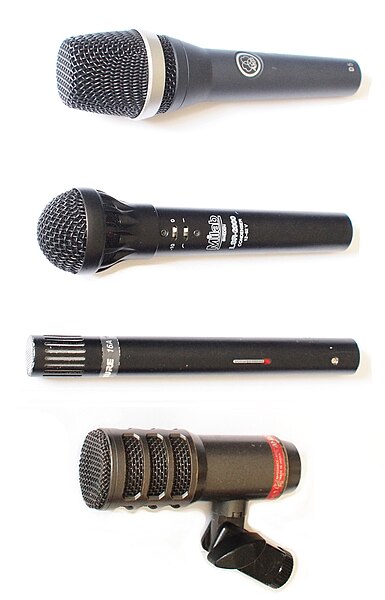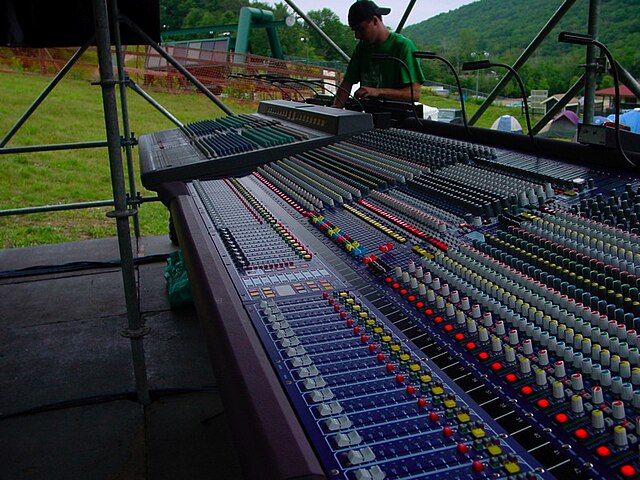Sound reinforcement system
A sound reinforcement system is the combination of microphones, signal processors, amplifiers, and loudspeakers in enclosures all controlled by a mixing console that makes live or pre-recorded sounds louder and may also distribute those sounds to a larger or more distant audience. In many situations, a sound reinforcement system is also used to enhance or alter the sound of the sources on the stage, typically by using electronic effects, such as reverb, as opposed to simply amplifying the sources unaltered.
Large outdoor pop music concerts use complex and powerful sound reinforcement systems
Audio engineers use a range of microphones for different live sound applications.
A Yamaha PM4000 and a Midas Heritage 3000 mixing console at the front of house position at an outdoor concert.
Graphic equalizer
A microphone, colloquially called a mic, or mike, is a transducer that converts sound into an electrical signal. Microphones are used in many applications such as telephones, hearing aids, public address systems for concert halls and public events, motion picture production, live and recorded audio engineering, sound recording, two-way radios, megaphones, and radio and television broadcasting. They are also used in computers and other electronic devices, such as mobile phones, for recording sounds, speech recognition, VoIP, and other purposes, such as ultrasonic sensors or knock sensors.
Shure Brothers microphone, model 55S, multi-impedance "Small Unidyne" dynamic from 1951
David Edward Hughes invented a carbon microphone in the 1870s.
Humphrey Bogart, Jack Brown, and Lauren Bacall with RCA Varacoustic MI-6203 ribbon microphones broadcast to troops overseas during World War II.
Inside the Oktava 319 condenser microphone








